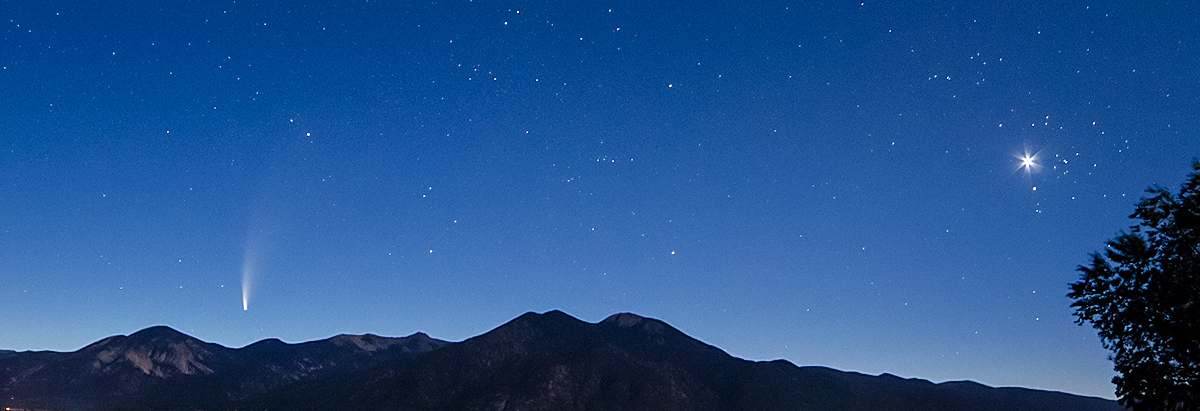
Welcome to taosastronomer.com!
offering
local "hands-on" observing
(visual and imaging) sessions and instruction
viewing and imaging from Rabbit Valley Observatory
a dark sky location on the mesa just west of Taos, NM
Image obtained 10-11/12-2015 through RVO's Megrez 80mm refractor with Orion field-flattener lens, using a Baader-modified Canon XSi DSLR and BackyardEOS image-acquisition software – 9 (of 23 obtained) carefully selected and stacked 360-second luminance frames combined with multiple dark, flat and bias calibration frames shot at ISO 1600 and totaling more than 360 minutes (54 minutes effective luminance) were used to create this image; optics driven by the Losmandy G-11 mount equipped with Ovision's precision RA worm gear, guided with an Orion SSG3 Monochrome CCD camera using Maxim DL Pro and post-processed with DeepSkyStacker and Photoshop CS3. From the web: "At magnitude +7.3 the Helix Nebula is the brightest planetary nebula in the sky. Based just on this information it would seem an easy target and indeed it is visible with just binoculars at a dark site on a moonless evening. But that is the key; dark skies are required. This is due to its large surface area resulting in a low surface brightness. At its widest point the main nebula covers 18 arc minutes with the much fainter outer halo spanning some 28 arc minutes – close to the diameter of the full Moon. The low surface brightness meant that Charles Messier failed to spot it. Even the two great astronomers, Sir William and Sir John Herschel, failed to notice it during their sky searches until German astronomer Karl Ludwig Harding eventually discovered it sometime before 1824. When viewed through a pair of 10x50 binoculars the Helix Nebula appears as a faint featureless oval shaped disk. A 100mm (4-inch) telescope reveals finer structural details. Through a 200mm (8-inch) telescope the Helix Nebula appears as a slightly large oval ring with two thick arcs, gaps and variations of brightness visible across the structure. A Nebula filter of the UHC (Ultra High Contrast) or OIII (Oxygen III) variety especially when combined with averted vision helps bring out more subtle details. However it's an illusive object that can be rendered invisible even in medium sized amateur telescopes with just a small amount of light pollution. The central star of the Helix Nebula is of magnitude +13.4 and therefore only easily visible in the largest of amateur telescopes. The Helix Nebula is located only 695 light-years from Earth and has an actual radius of about 3 light-years. It's the brightest planetary nebula and marginally brighter than M27 the famous Dumbbell Nebula. However, it's a much more elusive target due to its low surface brightness. When imaged or photographed the Helix Nebula looks spectacular, beautifully colourful with twists, coils, knots and rings of gas. It's a popular object on astronomer's observational lists.”
[image copyright Rabbit Valley Observatory/Willis Greiner, 2015 -- all rights reserved] |
(all content copyright 2015-2019 Willis Greiner Photography, all rights reserved)